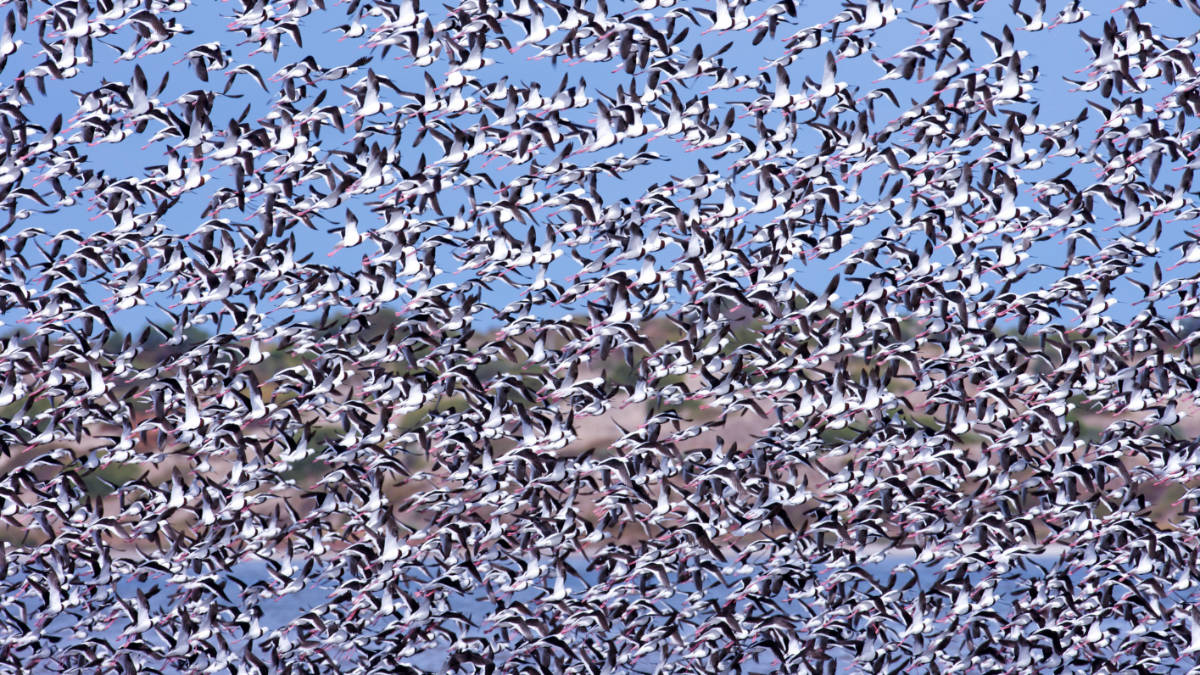Here’s why ASX explorers are flocking to South Australia in search of REEs

Pic: Getty Images
The world’s appetite for rare earth elements (REE) is growing and exploration companies are rushing to answer the call as governments continue to place increasing importance on finding economic resources outside of China to enhance local manufacturing and reduce sovereign risk.
China is the world’s dominant miner, processor, refiner, importer, and exporter of rare earths (REE) products, accounting for 63% of the world’s rare earth mining, 85% of rare earth processing, and 92% of rare earth magnet production.
But while demand for rare earths – a group of 16 minerals including terbium, yttrium, neodymium, and praseodymium – is increasing, global supply remains uncertain due to the technical and commercial risks associated with bringing rare earth projects online.
Geologically speaking, rare earth elements are not ‘rare’ but are commonly found mixed with one another or with radioactive elements such as uranium and thorium, making them costly to mine.
In the last few years, however, ASX explorers have been flocking to places like South Australia where ionic absorption clay deposits hold the four key elements (neodymium, praseodymium, dysprosium and terbium) essential for permanent magnets, used in electric vehicles, wind turbine generators, MRI scanners and cordless tools.
Unlike hard rock deposits, where miners have to crush, grind, and put the ore into a very large rotating vessel with sulfuric acid to separate the rare earths from the mineral, clay deposits are shallow – meaning they require negligible blasting, no crushing or milling, and no uranium or thorium radioactive tailings to deal with.
NOW READ: Why are ASX stocks so in love with clay rare earths projects? A punter’s guide
The exploration game is changing
Carmen Krapf, a principal geologist at the Geological Survey of South Australia, says another factor adding to the large endowment of the state is the preservation of thick, ancient weathering profiles overtime, which contain accumulations of rare earths.
“You can’t find these ancient weathering profiles in places like Canada because the glacial periods in the last 200,000 years stripped and eroded them away,” she says.
“Additionally, companies are changing the way they explore; for example, when they take rock samples, they are now analysing for a larger geochemical suite to find out more about the different elements that might be there.
“Now that these minerals have become critical and economically viable, explorers are looking for them and finding that we have a lot more occurrences than we originally thought 10 or 15 years ago.
“Our database, SARIG, helps companies find the information they need whether it be drill hole data, or geophysical imagery, to re-explore existing and known deposits, and target them for critical minerals.
“By doing so, they are finding new deposits, so it is a bit like recycling old knowledge and data to find new information… it is a really exciting time.”
For explorers like Taiton Resources (ASX:T88), based in a barely touched-on part of South Australia’s Gawler Craton, zircon geochronological work conducted by the company at its Highway project indicated the company is tapping into the same mineralisation of the Olympic Dam IOCG belt.
While results from a recent induced polarisation (IP) geophysical survey have reinforced Taiton’s target modelling that it is on to a climax-type molybdenum porphyry system, the company believes there is also great potential for the discovery of rare earth mineralisation – especially considering neighbours Indiana Resources (ASX:IDA), who abut Taiton’s tenements, have recently extended their REE target zone at the Minos prospect within the Central Gawler Craton Exploration Project (CGCP).
“We know a historical drill hole had gone through very shallow basement at our project and picked up rare earths so while we are about to kick off a 20 to 30 drilling hole program to test our molybdenum story, we will also be drilling through the same soils that could potentially host rare earths,” Taiton managing director Noel Ong explains.
“I think the fact that no one has done much work there in the Gawler Craton for the past two decades is perfect messaging for finding critical mineral opportunities.
“These drilling results could potentially open the door to a new frontier.”
Taiton Resources and Indiana Resources share prices today:
Which other ASX players are exploring in South Australia?
Australian Rare Earths (ASX:AR3)
Australian Rare Earths listed on the ASX in July 2021 after raising 12m at $0.30 through an oversubscribed IPO with its flagship Koppamurra project, situated on the South Australia and Victoria border.
The initial Inferred mineral resource of 39.9Mt at 725ppm TREO, reported at the time of listing, has more than doubled in size to 101Mt at 818ppm TREO using results from a 13,400m drilling campaign conducted in the December quarter of 2022.
More than 1,200 drill holes and over 8,200 assays were completed to inform the March 2023 mineral resource update, which also increased the Indicated resource category to 63Mt at 839ppm TREO.
The project is considered to be one of Australia’s largest prospective ionic clay-hosted rare earth elements (REE) deposits, and one of the few advanced ionic clay-hosted REE deposits outside of China and Myanmar, offering the potential to supply both the light and heavy rare earths required for high-strength permanent magnets.
With a market cap of $44.4m and $6.8m in the bank at the end of March, the company continues to make progress on several fronts including resource growth, metallurgical testing, and offtake discussions.
TARUGA MINERALS (ASX:TAR)
Taruga Minerals uncovered what it described as “exceptional” REE grades, up to 9,082ppm (0.91% TREO) at Morgans Creek within the wider Mt Craig project in October 2022.
Drilling at the time intersected high-grade clay-hosted REEs from surface, with many holes ending in mineralisation, and extended the strike at Hydrothermal Hill to 4.3km, with an additional 1km of strike remaining untested.
In mid-December Taruga announced preliminary ANSTO metallurgical outcomes with initial results providing extractions of up to 70% MREO, 60% HREO and 59% TREO. Importantly these were achieved with a sulphuric acid leach.
Following the recent drilling campaign at Mt Craig in 2022, the $7.76m market cap company is seeking to validate a potential flowsheet for the extraction of magnetic rare earth oxides (MREOs) identified before further exploration drilling is conducted.
PETRATHERM (ASX:PTR)
Drilling at Petratherm’s Comet rare earth project in South Australia’s Northern Gawler Craton in February this year identified and confirmed the presence of a new, large, rare earth prospect (Artemis) with grades up to 1,000ppm TREO over substantial thicknesses (up to 32m).
Complementing the company’s emerging Meteor rare earth prospect nearby, Petratherm says 90% of the project still remains underexplored for REE mineralisation.
Early this month the company conducted its first drilling program at Comet since the discovery of REEs at Artemis with drill samples lodged and assay results due in around six to eight weeks.
A second follow-up phase of drilling is planned once assay results have been received and evaluated.
The $16.63m market cap company had $3.1m cash in the bank as at the end of March.
ITECH MINERALS (ASX:ITM)
iTech Minerals’ Caralue Bluff prospect was initially established as a high-purity kaolin prospect but having identified significant REEs in kaolin-rich intervals at the Ethiopia, Burtons, and Bartels prospect, the company decided to drill test the regolith for hosted REE mineralisation.
The first batch of results returned thick, REE mineralisation close to surface with intervals up to 12m at 2,343ppm TREO from 9m with drilling later proving up a large exploration target of 110–220Mt at 636–838ppm TREO and 19-22% aluminium oxide.
Over the past few months iTech Minerals has focused on exploring all the processing options for rare earth recoveries at Caralue and by doing so, successfully recovered up to 86% TREO in leaching trials undertaken by METS Engineering.
“This has opened the path to creating a low cost and effective leaching process,” iTech Minerals managing director Mike Schwarz said.
“While it is still early days, this has the potential to be an important breakthrough for the economics of the Caralue Bluff prospect.”
The $28.71m market cap company had $7.82m cash in the bank at the end of March.
RESOURCE BASE (ASX:RBX)
Resource Base acquired the Mitre Hill project tenements in September 2021 and wasted no time in carrying out its first drilling program at the site in January 2022 and defining a resource at the start of 2023.
The clay-hosted REE and VHMS project, on the border of South Australia and Victoria, has an Inferred mineral resource estimate of 21Mt at 767ppm TREO, comparable in grade to Australian Rare Earth’s neighbouring Kopparmurra project.
An exploration target of 13Mt–34Mt at 630–830ppm TREO has also been established with the company now planning a follow-up aircore program to potentially convert a portion of the exploration target to a JORC resource and test for further extensions of REE mineralisation.
LANTHANEIN RESOURCES (ASX:LNR)
The first phase of Lanthanein’s aircore drilling program at the Murraydium project kicked off in March at the Bordertown block where a total of up to 307 holes is being drilled.
Previous work done in the region by Australian Rare Earths has outlined an extensive mineralised system where shallow near surface exploration has the potential to delineate significant JORC Resources of REEs, the company says.
The Murraydium Project is located in the southeastern region of South Australia with its tenements on EL 6717 covering an area of 872km2 in the Murray Basin.
Rare earth stocks share prices today:
At Stockhead we tell it like it is. While Taiton Minerals, Resource Base, iTech Minerals, and Lanthanein Resources are Stockhead advertisers, they did not sponsor this article.
Related Topics

UNLOCK INSIGHTS
Discover the untold stories of emerging ASX stocks.
Daily news and expert analysis, it's free to subscribe.
By proceeding, you confirm you understand that we handle personal information in accordance with our Privacy Policy.








